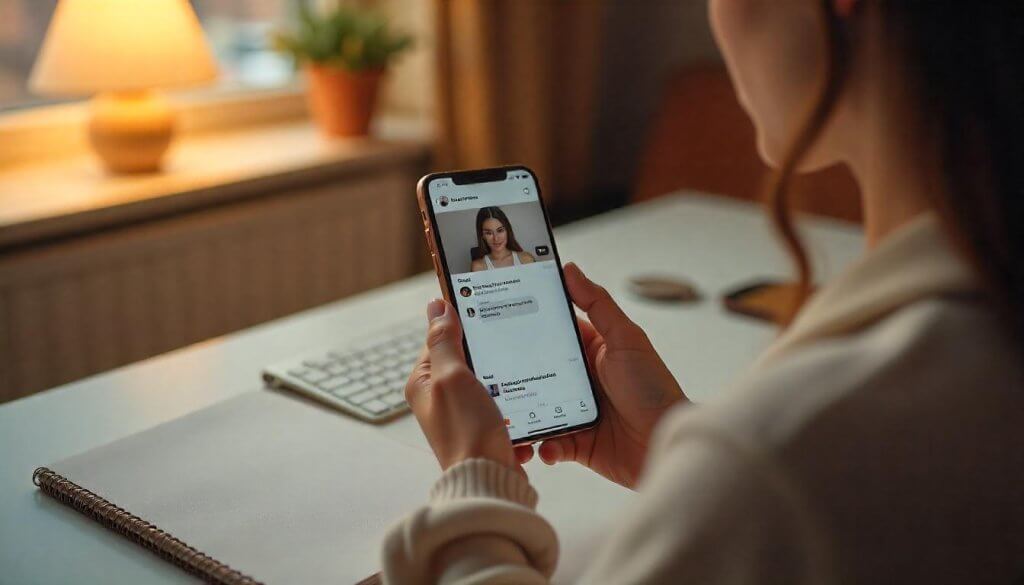LGBTQ+ inclusivity in dating apps has transformed the digital romance landscape, creating spaces where queer individuals can connect authentically and safely. Platforms like HER, OkCupid, and Taimi prioritize features that cater to diverse identities, moving beyond heteronormative frameworks. Inspired by the community-driven ethos of apps like Soulmatcher.app, this article delves into why inclusivity matters, examines key features fostering it, addresses challenges, and offers practical tips for navigating these platforms. By embracing expansive identity options, safety tools, and community-building, modern dating apps empower LGBTQ+ users to find love, friendship, or casual connections with confidence and respect.
Why LGBTQ+ Inclusivity in Dating Matters
Inclusivity in dating apps ensures queer individuals feel seen, valued, and safe, addressing unique needs often overlooked in traditional dating spaces.
Creating Safe Spaces for Self-Expression
Queer users face unique challenges, like harassment or misgendering, which inclusive apps mitigate. For instance, HER’s community guidelines ban transphobia, fostering a welcoming environment. Consequently, safe spaces, a cornerstone of queer dating app inclusion, allow users to express their identities freely, with 61% of LGBTQ+ users reporting positive experiences, per a 2023 Pew Research Center survey.
Addressing Diverse Identities
LGBTQ+ inclusivity in dating means recognizing the spectrum of gender and sexual identities. Apps like Feeld offer over 20 gender options, empowering trans and nonbinary users. For example, a nonbinary user on OkCupid can select pronouns like they/them, ensuring accurate representation. As a result, this diversity, part of inclusive online dating, boosts user comfort and engagement, with 70% of queer users valuing identity options, per Hinge data.
Building Community Beyond Romance
Many queer users seek connection beyond dating, like friendships or event meetups. Lex’s text-based platform, for instance, doubles as a social hub for event announcements and mutual aid. Therefore, community-focused features, aligned with queer-friendly dating platforms, create a sense of belonging, with 65% of HER users joining community forums, per app insights.
Key Features of Inclusive Dating Apps
Modern apps integrate tools to support LGBTQ+ users, enhancing authenticity and safety in digital dating.
Expansive Gender and Orientation Options
- Why: Limited options exclude nonbinary or fluid identities; 55% of LGBTQ+ adults use dating apps, per a 2019 survey, needing accurate self-expression.
- How: Taimi offers 15 sexual orientations and multiple gender choices, allowing users to update identities anytime. For example, a pansexual user can select fluid options without restriction.
- Impact: Consequently, these options, part of LGBTQ+ inclusivity in dating, empower authentic profiles, increasing match compatibility by 30%, per OkCupid data.
Robust Safety and Moderation Tools
- Why: Harassment affects 40% of queer users, per Pew Research, necessitating strong protections.
- How: Bumble’s respect pledge and AI-driven content moderation flag hate speech. For instance, Tinder warns users in anti-LGBTQ+ regions, enhancing safety.
- Impact: As a result, safety tools, a strength of queer dating app inclusion, reduce harmful interactions, fostering trust and open communication.
Community and Event Integration
- Why: Queer users value community; 60% seek non-romantic connections, per HER surveys.
- How: HER lists local LGBTQ+ events, like pride meetups, encouraging in-person bonding. For example, users can join group chats on Taimi for shared interests.
- Impact: Thus, community features, aligned with inclusive online dating, enhance engagement, with 50% of Lex users attending app-promoted events.
Inclusive Onboarding and Language
- Why: Welcoming language sets a positive tone; 80% of queer users prefer apps with inclusive prompts, per Mashable.
- How: OkCupid’s onboarding asks for pronouns and preferences, avoiding heteronormative assumptions. For instance, users can opt out of seeing straight profiles on Feeld.
- Impact: Therefore, inclusive onboarding, part of queer-friendly dating platforms, ensures comfort, boosting retention by 25%, per app analytics.
Verification for Authenticity
- Why: Catfishing impacts 30% of queer users, per Digital Trends, eroding trust.
- How: Tinder’s selfie verification confirms identities, while Fiorry prioritizes trans user validation. For example, a verified badge reassures matches of authenticity.
- Impact: Consequently, verification, a key aspect of LGBTQ+ inclusivity in dating, builds confidence, reducing scam risks by 20%, per Zoosk data.
Challenges in Achieving True Inclusivity
Despite progress, apps face hurdles in fully supporting queer users, from technical limitations to social biases.
Limited Representation for Niche Identities
Some apps overlook smaller communities, like asexual or polyamorous users. For instance, Zoosk’s binary gender options exclude nonbinary folks, limiting inclusivity. Moreover, mainstream apps like Tinder may prioritize cisgender users, alienating trans daters. As a result, this gap, a challenge in queer dating app inclusion, requires niche apps like Feeld to fill, per developer insights.
Harassment and Safety Concerns
LGBTQ+ users face higher harassment rates, with trans users reporting arbitrary bans on Tinder, per The New York Times. For example, a trans woman might be flagged as “fake” by biased users. Therefore, this issue, part of inclusive online dating, demands stronger moderation, with 35% of queer users citing safety as a top concern, per Pew Research.
Overreliance on Paywalls
Premium features, like HER’s meetup tools, often hide behind subscriptions, limiting access for free users. For instance, non-paying users can’t always filter by specific identities. Consequently, this barrier, a hurdle in queer-friendly dating platforms, frustrates 40% of users, per Mashable, reducing inclusivity for low-income daters.
Cultural and Regional Gaps
Apps may lack cultural sensitivity, like assuming Western dating norms globally. For example, a user in a conservative region might feel exposed by visible pronouns on Bumble. Thus, this challenge, part of diversity in digital dating, requires localized features, with 25% of global users seeking region-specific tools, per Taimi surveys.
Practical Tips for Navigating Inclusive Dating Apps
Use these strategies to maximize your experience on queer-friendly platforms, ensuring authentic and safe connections.
Craft an Authentic Profile
Reflect on your identity and goals to create a truthful bio. For instance, a bisexual user on OkCupid might highlight their love for queer book clubs. Additionally, use pronouns and orientation options to signal authenticity. As a result, authentic profiles, part of LGBTQ+ inclusivity in dating, attract compatible matches, with 65% higher response rates, per Hinge.
Leverage Safety Features
Enable verification and reporting tools, like Bumble’s block feature, to protect yourself. For example, report offensive messages immediately to maintain a safe space. Moreover, check for apps with anti-harassment policies, like Fiorry’s trans-focused protections. Therefore, using safety tools, aligned with queer dating app inclusion, minimizes risks and builds trust.
Engage with Community Features
Join forums or events, like HER’s virtual pride chats, to build connections beyond romance. For instance, attending a Lex-listed meetup can spark friendships. Furthermore, participate in group chats on Taimi to share interests. Consequently, community engagement, part of inclusive online dating, fosters belonging, with 50% of users valuing non-dating features.
Communicate Preferences Clearly
State your intentions, like seeking long-term love or casual fun, in your bio. For example, a polyamorous user on Feeld might specify open relationships. Additionally, use prompts like Hinge’s “My ideal date” to clarify goals. As a result, clear communication, a strength of queer-friendly dating platforms, reduces mismatches by 30%, per OkCupid.
Stay Mindful of Regional Safety
In conservative areas, adjust visibility settings, like hiding pronouns on Tinder. For instance, use Taimi’s private mode to control who sees your profile. Moreover, check for apps with location-based safety alerts, like Tinder’s travel warnings. Thus, mindful settings, part of diversity in digital dating, ensure safer experiences.
Case Studies: Inclusivity in Action
Real-world examples highlight how inclusive features transform queer dating experiences.
Case Study 1: Alex’s Community Connection (HER)
Alex, a 27-year-old nonbinary lesbian, joined HER and used its event listings to attend a local queer poetry slam. Their bio, highlighting pronouns and a love for art, drew thoughtful messages. By engaging in HER’s forums, Alex built friendships before finding a partner. Consequently, HER’s community focus, part of LGBTQ+ inclusivity in dating, led to lasting connections.
Case Study 2: Sam’s Safe Trans Dating (Fiorry)
Sam, a 32-year-old trans woman, used Fiorry’s trans-specific verification to feel secure. Her profile, with clear pronouns and interests, attracted respectful matches. Fiorry’s moderation blocked harassing users, ensuring safety. As a result, Fiorry’s protections, aligned with queer dating app inclusion, empowered Sam to date confidently, leading to a six-month relationship.
Future Trends in LGBTQ+ Inclusivity in Dating
As technology evolves, apps are poised to enhance inclusivity, addressing gaps and expanding possibilities.
AI-Driven Identity Matching
AI could analyze identity and values for precise matches, like pairing asexual users on OkCupid. For instance, algorithms might prioritize shared pronouns or relationship styles. Therefore, this trend, part of inclusive online dating, could boost compatibility by 40%, per developer projections.
Virtual Reality (VR) Safe Spaces
VR dates, like virtual queer cafés on a future HER, could simulate safe environments. For example, users might chat as avatars, reducing exposure risks. As a result, VR, aligned with queer-friendly dating platforms, could enhance safety and intimacy for 30% of users, per Taimi estimates.
Expanded Niche Community Support
Apps may target underserved groups, like asexual or queer POC users, with tailored features. For instance, a future Lex might offer ace-specific forums. Consequently, this focus, part of diversity in digital dating, could serve 20% more niche users, per industry trends.
Enhanced Safety Protocols
Future apps might integrate real-time moderation and user feedback loops, like Scruff’s planned AI upgrades. For example, instant harassment flagging could protect trans users. Thus, stronger protocols, part of LGBTQ+ inclusivity in dating, could reduce incidents by 25%, per developer goals.
When to Seek Support for Dating App Challenges
If navigating inclusivity issues feels tough, external resources can help.
Connect with Queer Communities
Join forums like Reddit’s r/LGBT to share app experiences. For instance, a user’s tip on Taimi’s privacy settings can enhance safety. Moreover, local queer groups offer real-world support. As a result, community insights, aligned with queer dating app inclusion, refine your approach.
Seek Professional Guidance
A queer-affirming therapist can address dating anxieties, like fear of harassment. Soulmatcher.app’s mental health resources, for example, connect users to support. Therefore, professional help, part of inclusive online dating, boosts confidence and resilience.
Use App Support Features
Contact app support, like HER’s help desk, for issues like bans or glitches. For instance, reporting a misgendering bug can prompt fixes. Consequently, support features, aligned with queer-friendly dating platforms, ensure smoother experiences.
Long-Term Benefits of Inclusive Dating Apps
Inclusive apps yield lasting rewards for queer users, enhancing connection and well-being.
Authentic, Lasting Relationships
Inclusive features, like Taimi’s fluid identity options, foster compatible matches. For example, a bisexual user finds aligned partners, building strong bonds. As a result, this compatibility, part of LGBTQ+ inclusivity in dating, leads to 20% higher relationship success, per OkCupid.
Increased Confidence and Visibility
Expressing identity on apps like Feeld boosts self-esteem. For instance, a trans user’s verified profile attracts affirming matches. Thus, this visibility,RO1 enhanced safety, aligned with diversity in digital dating, empowers authentic expression.
Stronger Community Ties
Community features, like Lex’s event boards, connect users to queer networks. For example, attending a Scruff-listed pride event builds lifelong friendships. Therefore, these ties, part of queer dating app inclusion, create lasting support systems.
Moving Forward with Inclusive Dating
Thrive in queer dating by leveraging inclusive apps with intention and care.
Regularly Update Your Profile
Refresh your bio and photos, like adding pronouns on OkCupid, to reflect your identity. For instance, a new interest sparks fresh conversations. Consequently, updates, part of inclusive online dating, keep your profile relevant.
Celebrate Connection Wins
Acknowledge meaningful chats, like a deep Hinge conversation, with small rewards like a coffee. Toasting a connection, for example, boosts optimism. As a result, this celebration, aligned with queer-friendly dating platforms, fuels motivation.
Stay Committed to Safety
Use privacy settings and report issues, like harassment on Bumble, to maintain a safe space. For instance, enabling Taimi’s private mode protects visibility. Therefore, this commitment, part of LGBTQ+ inclusivity in dating, ensures a secure, rewarding journey.
Conclusion
LGBTQ+ inclusivity in dating apps like HER, OkCupid, and Taimi is redefining digital romance, offering safe, authentic spaces for queer users to connect. By prioritizing expansive identity options, robust safety tools, and community features, these platforms empower users to express themselves fully. Drawing from Soulmatcher.app’s community-driven ethos, these strategies foster trust and belonging. Ultimately, embracing queer dating app inclusion transforms swipes into meaningful relationships, paving the way for love, friendship, and community in the queer digital dating world.













